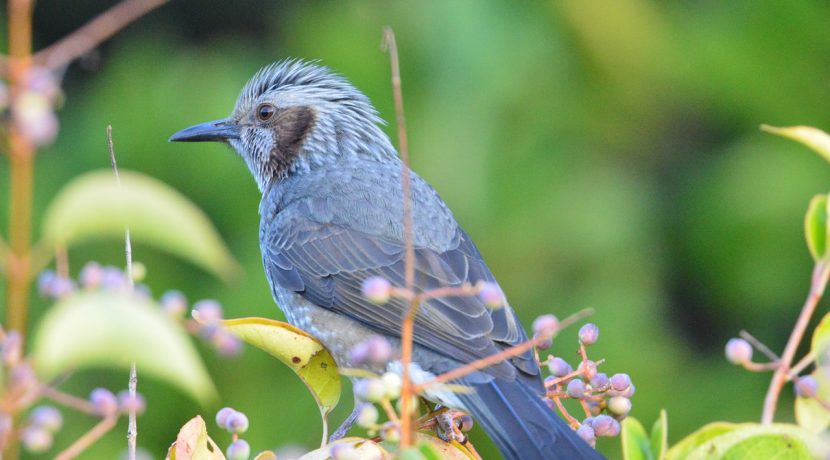10 Ways To Make Your Yard More Attractive for Birds
Pick Native Plants
Trees, shrubs, flowers and grasses that are adapted to the climate, soil and rainfall in your region won’t need as much water, pest control and artificial fertilizer to thrive. That’s less work for you and it’s better for the earth. Native plants also provide seeds and fruit for birds to eat, and they attract bugs that birds need to feed their babies. Good choices include coneflowers, sunflowers, trumpet honeysuckle, elderberry, oaks and dogwoods.
Plant a Diverse Buffet
Birds need four food types, so choose plants that will provide all of them. Oaks, hickory trees, sunflowers, and coneflowers supply birds with nuts and seeds. Cherry trees, spicebush and holly provide fruit. Willows, birches and milkweed host caterpillars that birds feed to their babies. And columbine, honeysuckle and penstemon provide nectar for hummingbirds.
Include a Water Feature
Birds need water for drinking and bathing. You can put out a birdbath, or just place a pan of water on the ground. Change the water daily to keep it clean. Put rocks or pebbles in it so small birds can climb out of the water if they fall in. Consider adding a fountain, because both you and the birds will like the sound. Best of all, insects won’t lay eggs in moving water so you will not end up with a mosquito farm in the backyard.
Arrange Plants in Layers
Create the feel of a bird’s natural habitat by providing plants of different heights. Large canopy trees can provide places to roost or nest, as well as fruits and nuts. Small trees and shrubs provide food and nesting spots for songbirds. Herbaceous plants, like perennial and annual flowers and groundcovers, provide food and habitat. Decaying leaves, wood and soil are the base of the habitat, providing bugs for birds to eat.
Shrink the Lawn
That lovely turf grass decreed by order of the HOA is useless to birds. They can’t hide from predators in it, and it doesn’t make any food for them. That lawn is also a drain on the planet because we dump 80 million pounds of pesticides on our 40 million acres of lawn every year. Then there are the 800 million gallons of gas we use in lawnmowers to cut the stuff. Replace some of it with wider flower beds, shrubs and trees. Not only will you attract more birds, but also you’ll be able to spend less time pushing a mower and more time sitting on the patio with a cocktail in your hand. Watching birds, of course.
Back Away From the Pesticides
You call insects pests, but birds call them dinner for the kids. Ninety-six percent of the land, birds need insects to feed their young, so if you leave the bugs, you’ll attract the birds. How much do they eat? A nest of six Carolina chickadees will scarf down 9,000 caterpillars in 16 days.
If birds aren’t getting the job done and bugs are destroying your plants, use organic pest control like insecticidal soap, neem oil or pyrethrum. Neonicotinoids, a widely used class of pesticides, are harmful to birds as well as bees and butterflies.
Put Out Bird Houses and Feeders
Yes, you’re planting shrubs, trees, grasses and flowers that will provide natural food and shelter for your birdie buddies. But more food and shelter means more birds. Put the feeders and houses near a window or patio where you can watch the birds eat and raise their young. Listening to them sing and watching them ferry bugs to their babies can be more calming than a bottle of wine.
Plant Shrubs
They give birds food and shelter and fit in small spots where there may not be room for a tree. Plant a mix of deciduous and evergreen shrubs so the birds always have shelter. Some of the best choices for birds include elderberry, blueberry, dogwood, lilac, willow, arborvitae and juniper. Group them together, because dense plantings give birds a safe place to hide from predators like cats and hawks.
Don’t Be Too Neat
Leave some areas of your yard natural. Allow dead trees to remain standing so birds can nest in them. Let flowers and shrubs go to seed and don’t cut them back because birds will eat the seeds. Leave the grass longer and build a brush pile where your feathered pals can get bugs, shelter and nesting materials. The more you mimic a natural habitat, the more birds you’ll have. The neighbors may not like it, but tough. You’ve got a planet to protect.
Provide a Place for Dust Baths
You’ve probably seen birds flapping on the ground, making clouds of dust and wondered what was up. They’re taking a dust bath. Dust absorbs excess oil in their feathers, removes mites and other parasites, and sloughs dry skin. Give them a dry, sunny, bare spot in your yard for their grooming ritual, in an unplanted flower bed or dirt pile. Ring it with rocks to contain the dust. Make sure it’s near shrubs or plants where the bird can hide if a cat or hawk interrupts his grooming routine. Your feathered pal shouldn’t have to risk death for good hygiene.

